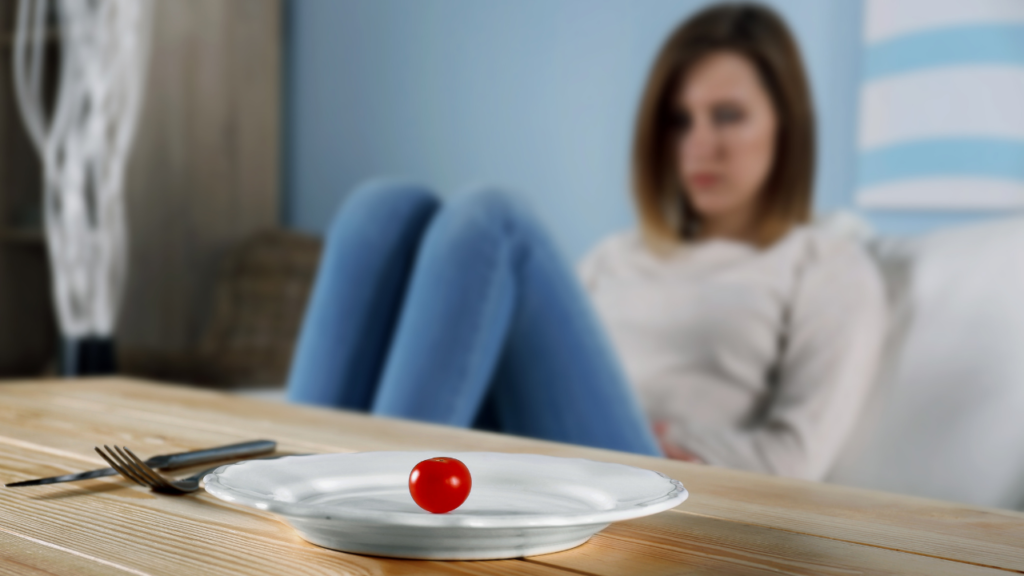Has this ever happened to you? You are going about your day and suddenly you decide to head to the kitchen and find a snack. Where did the idea to eat come from? Maybe you were stressed, bored, happy, excited, not even hungry and off you go to the kitchen anyway. Perhaps it’s simply a treat-myself moment or a distraction. Your brain, sometimes having a mind of its own- no pun intended, distracts you with thoughts of food.
We are designed to search for and secure food to maintain life. It is as basic as needing water and air. What, when and why we eat is organized by the brain, the master regulator of food intake. It ties together different brain functions focused on nourishing the body. We eat for hunger and pleasure. Both are directed by decision-making.
HUNGER
Hunger is a physical feeling letting you know it’s time to eat for calories and nutrition to assure life goes on. Hormones and central nervous system signals reach the hypothalamus located in the brain to direct the sensation of hunger and satiety. Simply put, you are good to go until the next meal when hunger returns. Meanwhile your brain, digestive system hormones, and nervous system continue to work in the background to manage your hunger awareness.
PLEASURE

- REWARD:
Pleasure seeking brain pathways may cause us to eat even if we aren’t hungry, but also are linked to hunger signals causing us to seek food. What we chose to eat, hungry or not, may be driven by flavor, taste, memory, an opportunity to socialize. We have no trouble listing favorite foods, meals, favorite restaurants, or childhood memories like having Oreos and a glass of cold milk. Our pleasure-seeking brains encourage the desire to eat but sometimes lead us to eat unhealthy food or too much just because it tastes good, or we just have to clean our plate.
Technically speaking the area of the brain responsible for food pleasure is the cortical basal ganglia circuit.
- THE PROBLEM:
Unfortunately, since 1975 our rates of overweight and obesity have jumped to about 70% or double that of the US adult population back then. The cause of this gradual weight gain is the increasing availability of a variety of food, especially hypercaloric, processed food. Grocery stores are bigger now with row after row of processed options. And, fast-food choices are everywhere.
- APPEALING INGREDIENTS:
We can blame the sensory appeal of sugar, fat, and salt in much of our processed food. Food manufacturers and restaurants capitalize on the appeal of these ingredients. Never mind the calories involved. Our taste buds can’t resist and neither do we. Think potato chips, salted caramel ice cream, or fast-food burgers with fries. Our taste buds are wired to enjoy these tastes and flavors, so we easily seek them.
- THE CHALLENGE:
Eating for pleasure is the most challenging to manage. Habits with what we eat develop from emotions, experiences, flavors, and comforts throughout our lifetime and define how we find pleasure in food. These rewarding habits, good or bad, are hard to break. When we try to change any of these, we easily can be defeated in our efforts in spite of a strong desire to adopt healthier eating habits that would lead to weight loss or better health. Reward pathways strengthen overtime and urge to repeat the habit may be stronger than the desire to change it.
DECISION-MAKING

Deciding what to eat and deciding what not to eat comes with a mindful, intentional approach to food. This means knowing what your choices are when you are hungry while anticipating the pleasure of eating. In other words, making intentional decisions about why and what you eat takes thought.
Your decision-making pathways are part of the pre-frontal cortex, an area of your brain behind the forehead where you make conscious decisions. However, these pathways can be overruled by a strong desire for the pleasure of food or strong hunger. This is your stop and think function. What menu choice should I make, what to fix for dinner, should I have more?
When trying to change a habit, especially a tough to change long-term habit, decision-making becomes your ally. Make it your “partner” as you establish a new healthy habit.
Even though hunger, pleasure, and decision-making are separate brain functions, they are uniquely wired within our brains for the purpose of nourishment. Eating with pleasure and balance to satisfy hunger is a beautiful culinary and nourishing partnership. What if food had no taste, smell, or texture? Hard to imagine…




